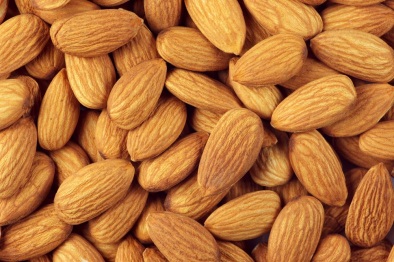Almond (Kernel) - WDRA
Almond (Kernel)
Commodity Code - 326
Commodity Name - Almond (Kernels)
Commodity Scientific Name - Prunus dulcis

General requirement
(1) Almond kernels means the product obtained from mature seeds of Prunus amygdalus Batsch, syn. Prunus dulcis (Mill.) D.A. Webb, from which the shell (ligneous endocarp) has been removed.
(2) The product shall be sound, whole, clean, sufficiently dried and free from living or dead insects, rancidity, visible foreign matter, visible moulds and rodent contamination.
(3) The product shall be uniform in colour with characteristic flavor of nuts, free from off odour and evidence of fermentation.
(4) The product shall also be free from added colouring and flavouring matter.
| S. No. | Characteristic | Requirements | |
| | Moisture (m/m), per cent | Not more than 6.0 | |
| | Inshell almonds, shell or skin fragments, (m/m), percent | Not more than 0.25 | Total tolerance Not more than 10.0 |
| | Rancid, rotten and damaged by insects or other pests (m/m), percent | Not more than 1.0 | |
| | Gummy and brown spot (m/m), percent | Not more than 2.0 | |
| | Blemishes and discoloration(m/m), percent | Not more than 4.0 | |
| | Shrunken or shrivelled and not sufficiently developed kernels(m/m), percent | Not more than 4.0 | |
| | Split, broken and halves (m/m), percent | Not more than 5.0 | |
| | Chipped and scratched (m/m), percent | Not more than 10.0 | |
| | Doubles or twins (m/m), percent | Not more than 10.0 | |
| | Acid insoluble ash , percent | Not more than 0.1 | |
| | Oil content (m/m), percent | Not less than 45.0 | |
| | Acidity of extracted oil, expressed as oleic acid, percent | Not more than 1.25 | |
Explanation: - For the purposes of this clause,-
(a) “double or twin” means almond kernel of characteristic shape, with one side flat or concave, as a consequence of the development of two kernels in the same shell;
(b) “clean” means free from visible adhering dirt or other foreign material;
(c) “Sufficiently developed “means almond kernel of normal shape, without aborted or dried out portions; shrunken and shrivelled kernels are not sufficiently developed;
(d) “shrunken or shrivelled” means almond kernel which is extremely flat and wrinkled, or almond kernel with desiccated, dried out or tough portions when the affected portion represents more than one quarter of the kernel;
(e) “chipped kernel” means mechanically damaged almond kernel from which less than one quarter of the kernel is missing; it is not considered as a defect the loss, in aggregate, of less than the equivalent of a circle of 3 mm in diameter;
(f) “scratched kernel” means superficially mechanically damaged almond kernel with absence of part of the skin, affecting or not the endosperm; it is not considered as a defect lacks of skin or scratched areas of less, in aggregate, than the equivalent of a circle of 3 mm in diameter;
(g) “half” means longitudinally split almond kernel from which the two halves (cotyledons) are separated;
(h) “split or broken kernel” means mechanically damaged almond kernel from which more than one quarter of the kernel is missing;
(i) “piece” means small fragment of almond kernel which pass through a 10 mm round meshed sieve;
(j) “mould” means mould filaments visible to the naked eye, either inside or outside of the almond kernel;
(k) “rancidity” means oxidation of lipids or free fatty acid production giving a characteristic disagreeable flavour; an oily appearance of the flesh does not necessarily indicate a rancid condition;
(l) “rotten” means significant decomposition or decay caused by the action of micro-organisms or other biological processes, normally accompanied by changes in texture and/or colour;
(m) “insect or pest damage” means visible damage or contamination caused by insects, mites, rodents or other animal pests, including the presence of dead insects, insect debris or excreta;
(n) “living pests” means presence of living pests (insects, mites or others) at any stage of development (adult, nymph, larva, egg, etc.);
(o) “gummy” means resinous appearing substance, affecting or not the endosperm, covering in aggregate an area more than the equivalent of a circle of 6 mm in diameter;
(p) “brown spot” means slightly depressed brown spots on the almond kernel, affecting or not the endosperm, either single or multiple, caused by the sting of insects as the box elder bug (Leptocoris trivittatus Say), covering in aggregate an area more than the equivalent of a circle of 3 mm in diameter; and blemish and discoloration apparent and spread stains, other than gum and brown spot, or severe dark or black discoloration contrasting with the natural colour of the kernel skin, affecting in aggregate more than one quarter of the surface of the almond kernel; it is not considered as a defect the normal colour variations between the kernels of one lot.
(q) “abnormal external moisture” means presence of water, moisture or condensation directly on the surface of the product;
(r) “foreign smell or taste” means any odour or taste that is not characteristic of the product;
(s) “foreign matter” means any visible or apparent matter or material, including dust, not usually associated with the product, except mineral impurities.
Total Shelf Life - 5 Months
Initial Validity of e NWR – 3 Months
Extension of e NWR Validity - 1 Months
Number of Extensions - Two
Weight Tolerance - Loss or gain equivalent to 70% of the decrease or increase in the moisture content during storage







